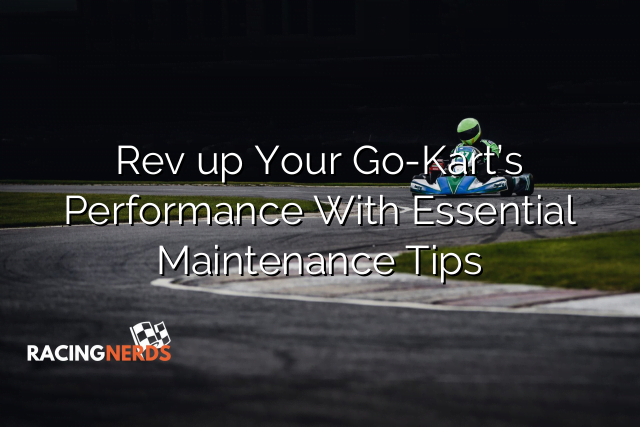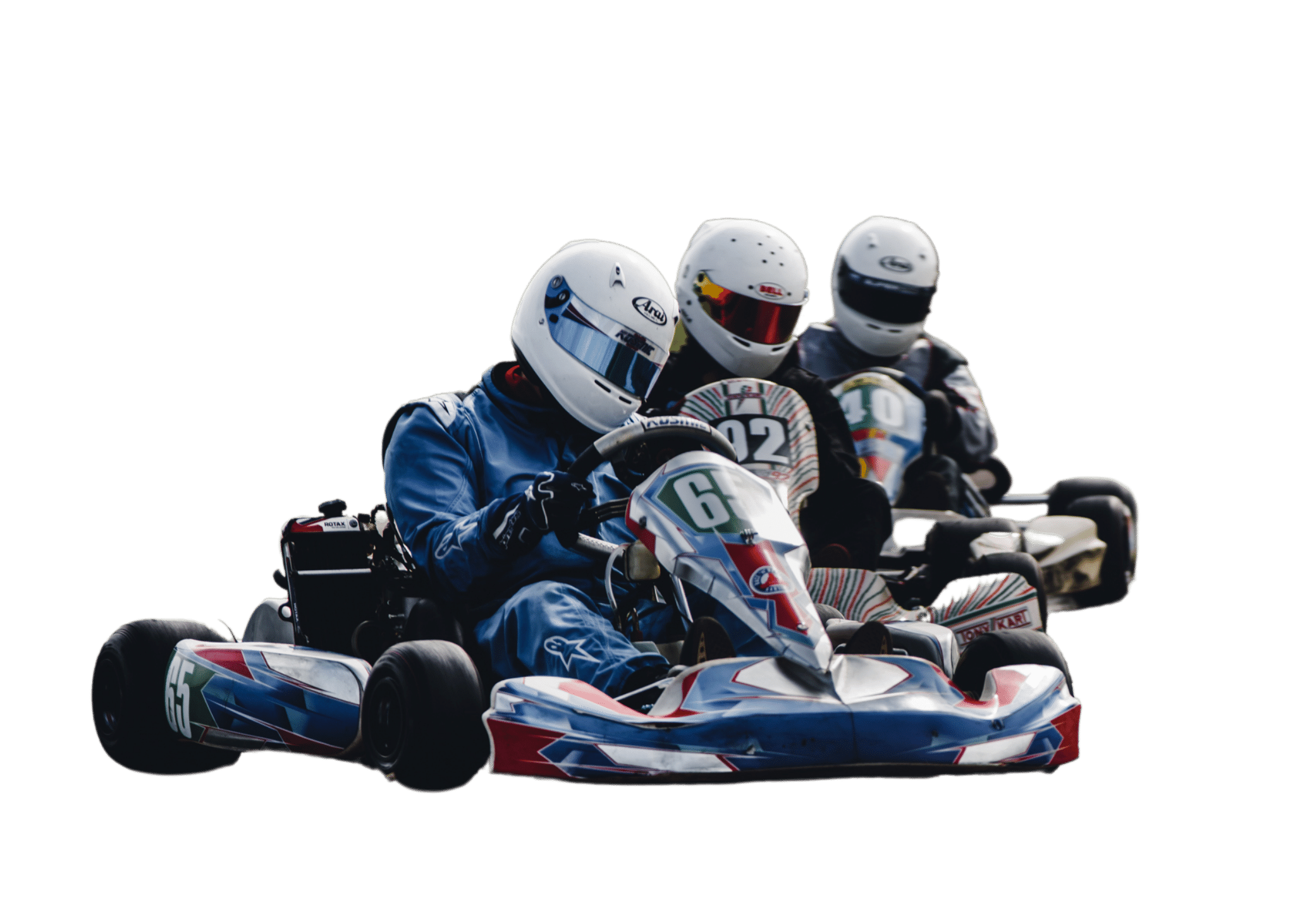
In the realm of competitive go-kart racing, the difference between standing atop the podium or spectating from the sidelines often hinges on the minutiae of maintenance discipline. A well-maintained go-kart transcends the sum of its parts, becoming a seamless extension of the driver’s intent and prowess.
As such, the significance of routine brake system care, precise torque specifications on all fasteners, and the vigilant upkeep of the powertrain cannot be overstated. While the layperson may overlook the nuanced importance of fuel system hygiene or the subtle impact of electronic data tracking devices, aficionados recognize these facets as vital cogs within the greater mechanism of karting performance.
To the dedicated racer, these insights serve as a preamble to a broader discussion on elevating one’s go-kart to peak operational excellence. The following discourse promises to impart essential knowledge that, if applied, could refine your vehicle’s responsiveness and durability, potentially altering the trajectory of your racing endeavors.
Ensuring an optimal brake fluid level is a critical step in maintaining the braking system’s reliability and performance on your go-kart. Regular inspection is mandatory, as signs of low brake fluid, such as a soft brake pedal or reduced responsiveness, can compromise safety.
When checking brake fluid color, clarity indicates fluid integrity, while a dark or murky appearance suggests contamination and necessitates immediate replacement. Utilize a clean syringe or turkey baster to extract a sample from the master cylinder, ensuring minimal exposure to air and contaminants.
Precise measurement against the recommended specifications is crucial; top off as needed with the appropriate grade of fluid, always avoiding overfilling. Meticulous attention to these aspects guarantees the maintenance of optimal braking performance.
To maintain optimal braking performance on your go-kart, it’s essential to periodically bleed the brake system to purge air pockets from the brake lines. Air in the brake lines can compromise the system’s efficiency and increase stopping distances. Utilizing proper bleeding techniques ensures that your brake line maintenance keeps the kart’s stopping power at its peak.
Here’s how to maintain a robust brake system:
Regular monitoring of brake pad thickness is critical for maintaining safe braking performance on your go-kart.
Overlooking the wear on your brake pads can lead to common brake pad issues such as reduced stopping power or uneven braking, which can compromise safety and handling.
To prevent these problems, inspect the pads before and after each session on the track. Look for signs of glazing, cracking, or uneven wear, which indicate that it’s time for replacement.
Adhering to brake pad replacement tips, such as ensuring that the new pads are compatible with your go-kart’s brake system and bedding them in properly, will enhance your kart’s braking efficiency.
Always prioritize precision when measuring pad thickness, as this directly influences braking reliability.
While monitoring brake pad thickness is a crucial aspect of maintenance, being vigilant about the performance signs of your go-kart’s braking system is equally important to maintain safety and functionality on the track. Acknowledge the Importance of proper braking performance to ensure the go-kart responds accurately during races or leisure laps. Here are some technical tips:
These practices are essential to preserving the integrity and performance of your go-kart’s braking system.
Ensuring that all nuts and bolts on a go-kart are securely fastened is a critical step in maintaining the vehicle’s structural integrity and safety during operation. The importance of regular maintenance for nuts and bolts cannot be overstated, as even a single loose component can lead to accidents or mechanical failures.
Adopting proper techniques for securing nuts and bolts effectively involves methodical inspection and the use of appropriate tools, such as torque wrenches, to achieve the correct tension. It is essential to follow the manufacturer’s specifications for torque settings and to check for signs of wear or damage that could compromise the fastening.
Regular checks after sessions on the track will help ensure that all connections remain tight and the go-kart performs reliably.
Given the critical role that proper torque and fastening play in the safety and performance of a go-kart, it is essential for mechanics and enthusiasts to equip themselves with a comprehensive toolkit tailored for go-kart maintenance. Assembling an effective go-kart toolkit demands precision and practical knowledge to ensure every component functions at its peak.
Go kart toolkit essentials should include:
These items are not just tools; they are investments in the reliability and performance of your go-kart. Proper care, facilitated by the right toolkit, can significantly extend the life and enhance the performance of your go-kart.
Regular cleansing of the go-kart’s exhaust system is crucial for preventing rust accumulation and maintaining optimal engine efficiency. Over time, the exhaust can become clogged with carbon deposits, leading to diminished performance and increased fuel consumption.
To ensure the integrity of your system, periodic inspections should be conducted to identify any potential exhaust leaks, which can compromise power output and pose safety risks.
When performing exhaust system upgrades, it’s essential to use high-grade materials that can withstand the high temperatures and corrosive gases.
A comprehensive cleansing involves the careful removal of the exhaust components, followed by a thorough cleaning using specialized solvents designed to dissolve stubborn residue.
Reassembling should be done with precision, ensuring all seals and connections are secure to avoid future leaks and inefficiencies.
To prevent the accumulation of rust within the exhaust system, it is essential to implement a consistent cleaning and maintenance schedule, utilizing anti-corrosive treatments and protective coatings designed for high-temperature environments.
After washing or using the go-kart, thoroughly dry the exhaust system to prevent moisture from lingering and causing rust.
Adhering to these guidelines can play a pivotal role in preventing exhaust leaks and maintaining the optimal performance of your go-kart’s exhaust system.
While ensuring the exhaust system is free from rust and corrosion is crucial for engine performance, equally important is the assessment of the chassis condition to prevent structural failures and maintain handling integrity.
Assessing chassis integrity begins with a thorough visual inspection for any signs of cracks, dents, or deformations. Identifying potential chassis damage early is key to avoiding performance issues and potential safety hazards. Pay close attention to common stress points such as welds and joints, as well as the chassis waist for any signs of flattening.
Ensure that all bolts are secure and that the frame is not compromised. By meticulously maintaining the chassis, you safeguard the reliability and competitiveness of your go-kart.
Ensuring the proper functioning of tie rods and tire integrity is essential for maintaining the precise steering and stability of your go-kart. When inspecting these components, pay close attention to the following:
Adhering to these maintenance checks will contribute to a safer and more reliable racing experience.
Just as regular inspections of tie rods and tires contribute to the kart’s performance and safety, maintaining a charged Mychron device is crucial for monitoring and improving your racing metrics. A fully charged Mychron ensures accurate data capture, which is vital for effective Mychron data analysis. Proper charging also reduces the risk of Troubleshooting Mychron issues during critical times.
| Process | Purpose | Tips |
|---|---|---|
| Initial Charge | Ensure device readiness | Follow manufacturer’s instructions |
| Regular Charging | Maintain battery health | Charge after each use |
| Monitoring Charge | Avoid data loss | Check battery status before sessions |
| Troubleshooting | Resolve charging problems | Inspect cables and connections for damage |
Adhering to a disciplined charging regimen enhances the reliability of performance data and extends the lifespan of your Mychron device.
To maximize the battery life of your Mychron device, it is essential to follow a strict charging protocol and handle the battery with care to prevent premature degradation. Here are some technical tips:
Adhering to these guidelines will ensure the longevity of your Mychron’s battery, enabling reliable performance and precise data collection.
While proper Mychron battery management is crucial for monitoring performance data, vigilant maintenance of the chain and sprocket is equally essential to translate that data into peak go-kart performance.
Chain stretch, a natural consequence of regular use, can lead to inefficiencies and potential mechanical failure. To mitigate this, regularly inspect the chain for elongation and replace it when the stretch exceeds the manufacturer’s specifications.
Concurrently, attention must be given to the sprockets. Replacing worn sprockets is not merely a precaution; it is a critical measure for preventing chain slippage and maintaining the integrity of power transmission from the engine to the wheels.
Ensure that both components are properly aligned and tensioned to achieve the optimal synergy for high-level karting performance.
Ensuring the longevity and reliability of your go-kart’s performance, regular cleaning of the fuel system is a critical maintenance task that involves several detailed steps. The importance of regular fuel system maintenance cannot be overstated, as it prevents clogs, maintains efficient fuel flow, and ensures the engine operates at peak performance. Precision in fuel system cleaning methods is essential for this intricate process.
Wheel balancing and steering checks should be conducted regularly, at least before each racing session, to ensure precision in handling and uniform tire wear, contributing to the kart’s performance and safety.
For off-season go-kart storage, use fuel additives to prevent fuel degradation. Select breathable cover materials to avoid moisture buildup, which mitigates rust and component damage, ensuring the kart remains race-ready.
Adjusting the gear ratio, akin to tuning a guitar for the perfect pitch, significantly affects go-kart performance. Optimal gear materials and meticulous track analysis are crucial for finding the sweet spot for each circuit.
To winterize a go-kart’s engine, use fuel additives to prevent fuel system corrosion, and select a suitable lubricant to protect the engine parts. Drain fuel, lubricate components, and store the vehicle in a dry place.
For optimal racing performance, selecting tires with the appropriate tread patterns for track conditions is crucial. Maintain tire pressure vigilantly to ensure grip and stability, thereby enhancing overall go-kart handling and speed.
In conclusion, the pursuit of excellence in go-kart performance is anchored in the rigorous execution of maintenance tasks.
Ensuring the seamless operation of braking systems, the structural integrity of connections, and the efficacy of electronic instrumentation are non-negotiable tenets.
The meticulous care of power transmission components and the purification of fuel systems serve as the lifeblood of optimal functionality.
This dedication to upkeep not only enhances the thrill of the ride but also safeguards the longevity of the machine.

